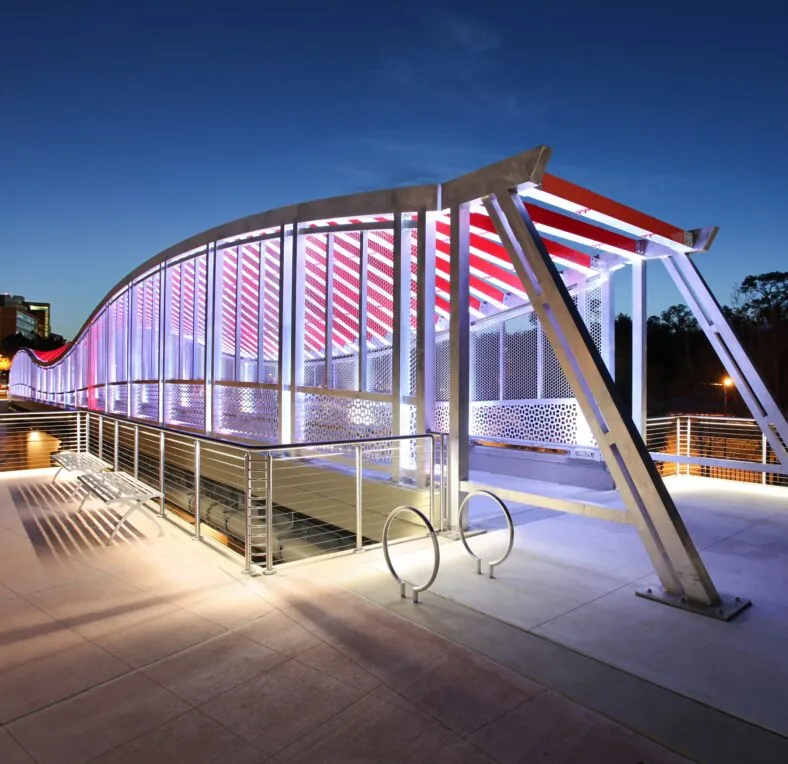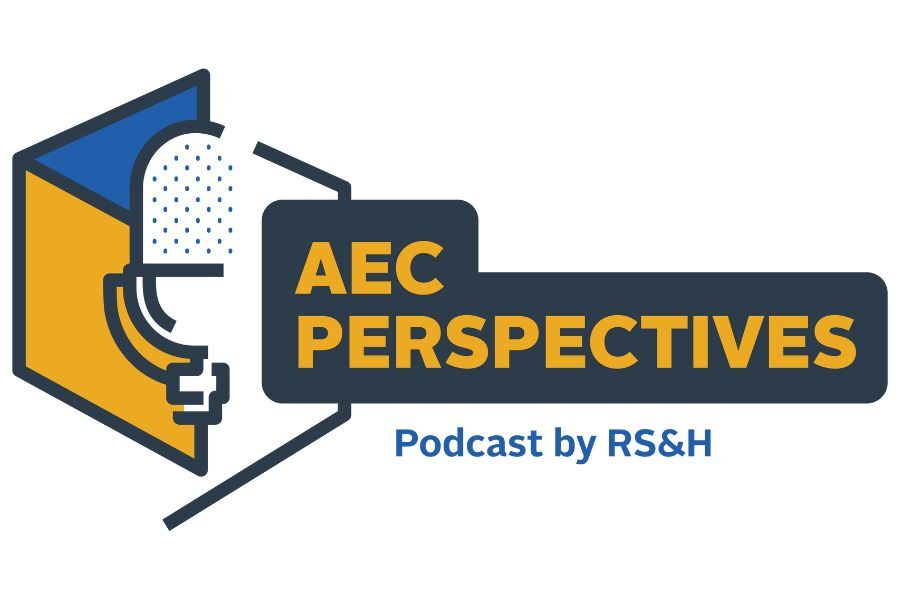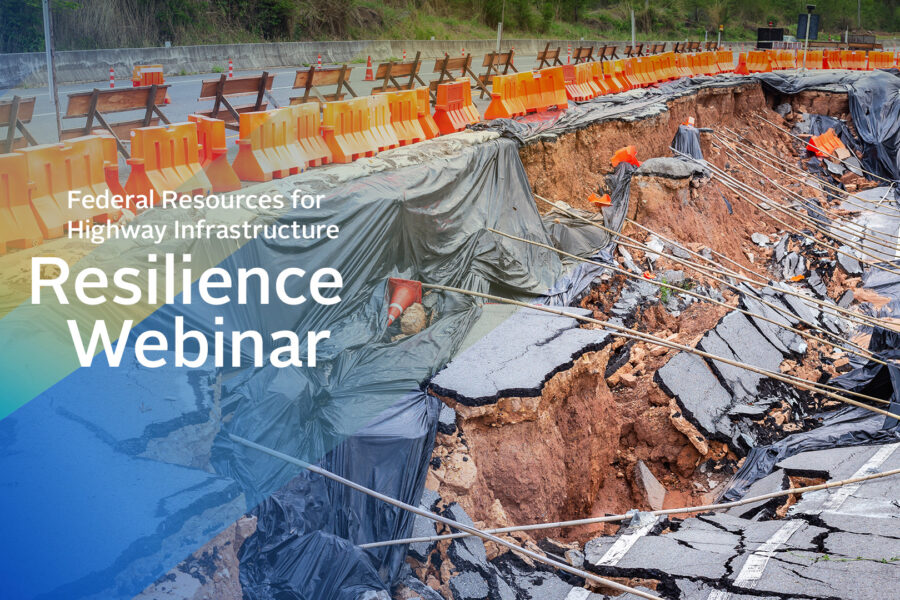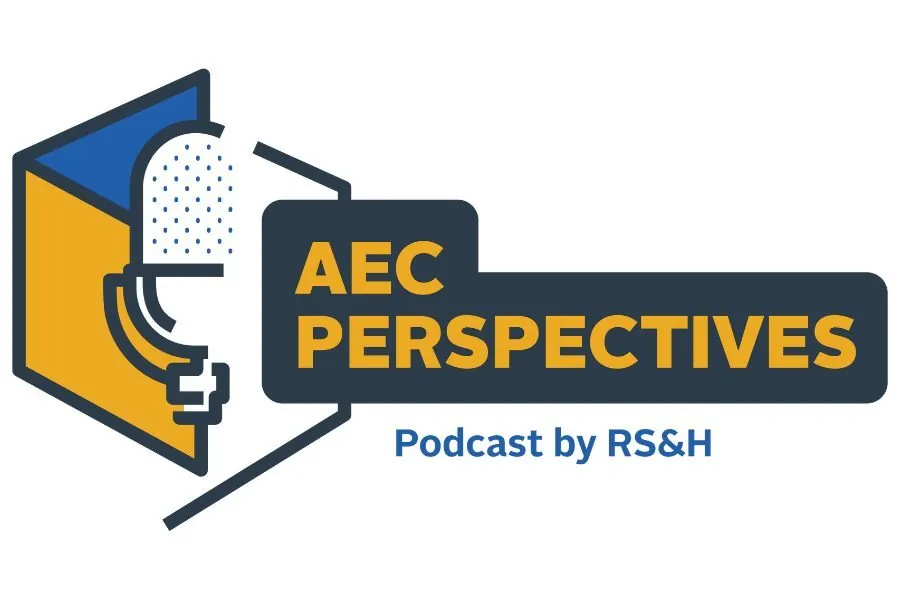Sustainability

Our Resilience & Sustainability Commitment
We are committed to relentless improvement internally; our projects, clients, and communities benefit from RS&H’s drive, and our commitment to resilience and sustainability ensures we are performing design excellence best practices to meet our goals and our client’s goals.

Download RS&H's Resilience & Sustainability Action Plan
Our Resilience & Sustainability Action Plan is a dynamic and evolving document, a call to climate action, and serves as a critical path towards establishing RS&H as an industry leader in resilience & sustainability. This action plan was developed as part of our commitment to building better – meeting the building performance requirements of the AIA 2030 Commitment in alignment with the AIA’s Framework for Design Excellence and serves as a guide for our work moving forward.
The following design principles provide a framework to shape our approach.
We are a unique mix of collaborators. We always ask why before how. We are passionate problem solvers and have a fundamental belief that enduring design has the promise to enrich the lives of individuals, communities, and the world.
A successful integrated design process brings every team member together at the earliest stages of the project to explore solutions that will help achieve sustainability goals and performance metrics. A shared direction that all stakeholders can rally around will set the stage early for positive outcomes.
In engineering and architecture, improving water conservation and water quality strategies begins with site development, designing and using ‘best management practices’ for storm-water management during construction and low-impact development standards, and continuing through each design phase and into construction.
Both horizontal infrastructure and buildings offer opportunities to protect our ground water and conserve potable water. Our water quality experts, engineers, and architects are always exploring innovative ways to reuse, capture, and retain water on the site.
As we move towards net-zero energy as part of our client’s net zero carbon goals, we develop both whole site carbon analytics and high performance building analysis to quantify both operational carbon and embodied carbon in horizontal infrastructure and in the vertical built environment.
Advanced energy modeling and life cycle cost analyses guide our comprehensive investigation of new materials, systems, and technologies and has evolved into an essential instrument during the early stages of an integrated design process.
Flexibility and adaptation, passive survivability, resilient design, and infrastructure resilience are newer practices for the architecture, engineering, and construction industry and are all components of designing for adversity. Vulnerability assessments and feasibility studies are critical exercises to determine investment priorities for our clients.
We explore how projects can be physically hardened to prevent damage and maintain critical functions, as well as support immediate recovery in the first days and weeks of a climate emergency, including a loss of power or access to water during a crisis, facilitating long-term civic recovery. Resilience planning and implementation during design and construction has become a crucial element to explore with building owners during the early stages of design and planning.
Equitable design solutions connect a single project to the larger community beyond the client and end users. We connect with the communities we work in and provide a framework for community voices and inclusive outreach as part of the planning and design process during our infrastructure or building projects. Designing to remove barriers and burdens, empowering, and enabling people to gather and connect, live, and function to their highest potential are inherent to equitable design.
The projects we design impact their larger ecosystem, whether an urban site or on an undeveloped site, we understand our impact doesn’t just stop at a lot line. Understanding impact on the surrounding environment and larger ecosystems is a fundamental part of our engineering and architecture practice. Our goal is to maintain and even positively impact the larger ecosystems we work in using a nature positive solutions approach as the key to designing with nature, not against it.
Designing for social, financial, and environmental economy is interwoven into every aspect of our projects. Economic considerations may include exploring project funding sources, financing options, grant availability, site selection, exploring first costs for infrastructure investment and long range planning, and assessment of capitol project priorities.
We also evaluate costs during building programming, space planning, evaluation of building systems, selection of materials, and cost estimating/value engineering. Designing for economy focuses on reducing the use of materials and protecting our limited resources, while preserving and enhancing social and environmental capital.
Designing for the well-being and health of all people, considering the physical, mental, and emotional effects on building occupants, infrastructure end users, and the surrounding community, is a fundamental part of our professional responsibility as architects and engineers.
Informed and conscientious material selection involves balancing all the priorities inherent to a project to achieve a resilient, safe, and sustainable outcome with responsible procurement that minimizes the possible negative impacts on the planet.
Selecting materials and products responsibly can enhance human health, climate health, ecosystem health, and social equity within a circular economy.




